Like most major interurban properties, PE went through a progression of design and equipment
on its box motors. Materials for the construction of the cars evolved, as did electrical
and mechanical components, allowing larger and larger cars to be built. With the coming of
World War II, PE had an explosion of transportation needs that meant the property shifted
some cars from one service to another. This piece considers the progression in box motor
design and equipment.
In the interest of brevity, not all steps in the process can be included
here. Electric Railway car shops on the major systems were fully the equal of their steam
road sisters in terms of capabilities in this era.
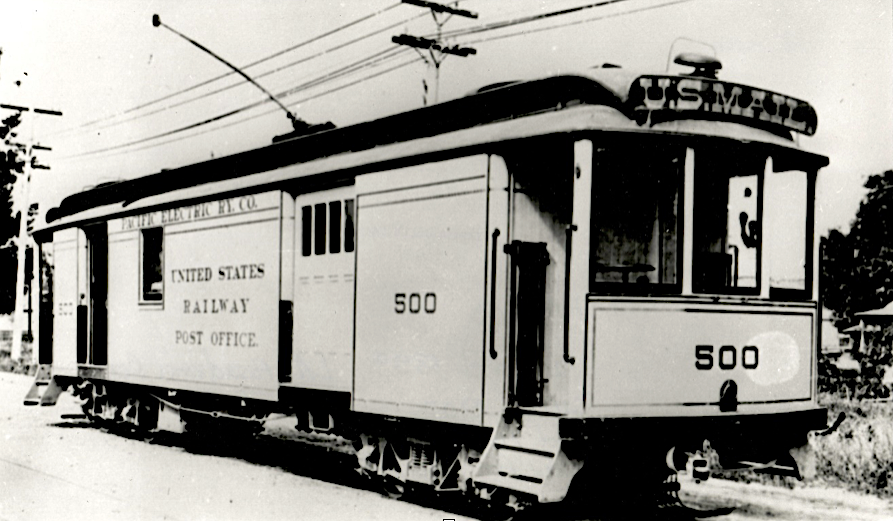
Old Pacific Electric 500 (a combination baggage-mail car) was built for the Los Angeles & Pasadena
Railway by the JS Hammond Company of San Francisco in 1899. This car went to the PE in 1902, when
this photo was taken. The car was renumbered to PE 1000 circa 1907 and then to PE 1416 in 1911.
The 1400-series numbers were used for the RPO and box motor numbering in the PE numbering system
that would prevail for the remaining existence of the company. This car had an empty weight
of 40,700 pounds and an overall length of 42 feet-4 inches. The car was destroyed in the
Redondo carhouse fire of 1921.
Old PE refers to the Henry Huntington original PE (as reflected in car 500 shown above),
which he sold to the SP on November 10, 1910. This is contrasted to New PE which considers
the consolidation of the old PE entity with the Los Angeles Interurban, Los Angeles & Redondo,
Redlands Central, Riverside & Arlington and San Bernadino Valley Traction. SP had already
acquired the Los Angeles Pacific, which was also folded into the New PE operation. This
consolidated PE would remain in operation until the 1953 sale to Metropolitan Coach Lines.
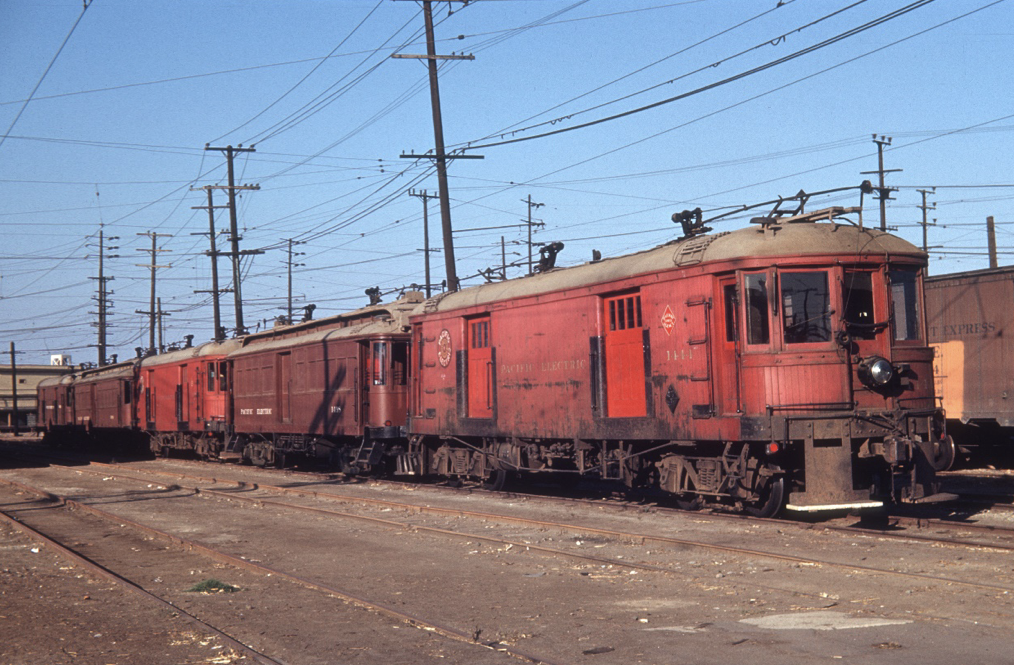 Superb
light brings out all the details on this string of PE box motors waiting for the call to duty
in the Los Angeless 8th Street Yard in the Henry Stange photograph of September 11, 1949. Car
1444 at the head of the line is typical of the PE box motor design developed in the teens.
This car was built at Torrance Shops and went into service in August of 1911. This car had an
overall length of 46 feet-2-1/8 inches and an empty weight of 71,400 pounds. Car 1444 was
equipped with four GE 205B motors, each producing 75 HP. The car was taken out of service and
stored at Torrance Shops from May 26. 1950 until it was scrapped by the SP at the Alhambra
Avenue Yard in 1953.
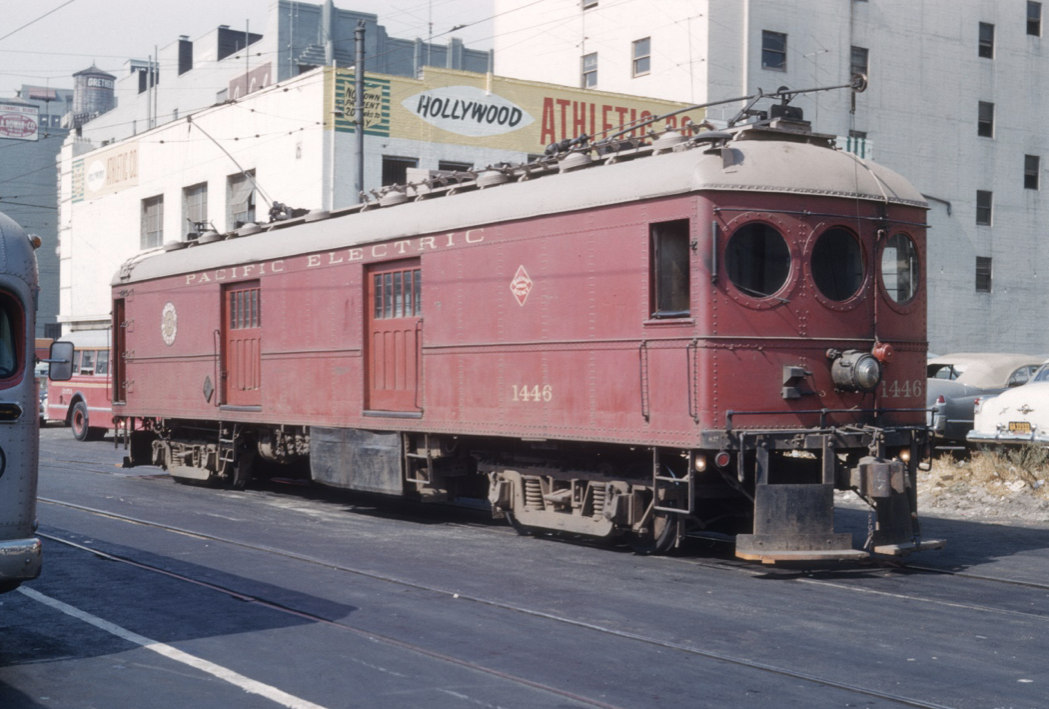 That
corner of a GM bus to the left and the Cadillac in the lot to the right help to date the Bill
Janssen shot of PE 1446 at Main in Los Angeles to 1952. This car was built of all-steel
construction by Pullman in 1913 for the SP Oregon & California subsidiary for use on the East
Side electrification in Portland, OR. The car had an overall length (over end sills) of 52
feet-3/4 inches and an empty weight of 97,100 pounds. The first of the ex-Portland box motors
were transferred to the PE in 1927, this car (O&C 753) did not move south until 1929. PE ended
all box motor service on November 15, 1952 leading to the 1953 scrapping of this car by SP.
XX
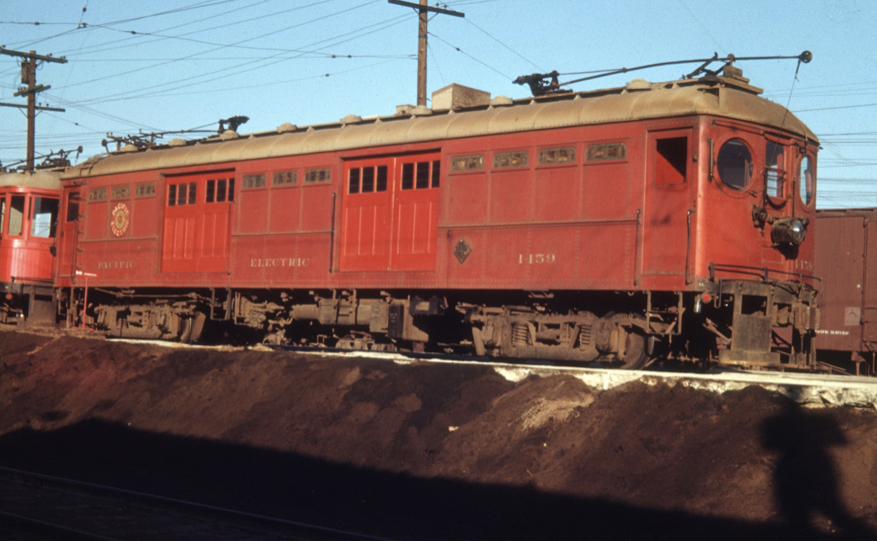 Oregon
& Califrnia went back to Pullman for additional passenger cars for the Portland operation in 1921,
including car 213, which would eventually become PE 1459, as shown in this George Krambles view
at 8th Street Yard on September 11, 1949. On the end of the Portland operation in 1929, this
order of coaches was transferred to PE, but remained in storage until 1941 when the six cars
were converted to box motor duty. The pressing need for additional freight capacity meant
that the conversion work was kept to a minimum, plating over the side windows, but retaining
the upper sash, etc. These cars had an empty weight of 99,100 pounds and were equipped with
four GE 222D motors, each producing 125 HP.
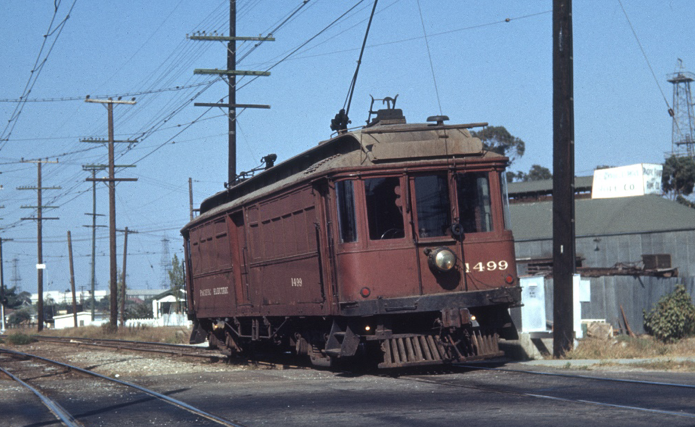
Another wartime expediency was the conversion of five former 800-series passenger cars to
express service in 1940. This car had been built as PE 367 by St. Louis Car in 1906, renumbered
to 418 in 1907 and finally assuming its 844 number in 1911. The five converted cars worked
the express duty until 1942, when they were restored to passenger service. Reconversion to
express duty occurred in 1944. Henry Stange caught the car at Wilmington on September 12,
1949. This car was scrapped in 1951.
|




